Discover the advantages of properly modeling solid suspension in process equipment to enhance operational performance.
Understanding Solid Suspension
Solid suspension refers to the behavior of particles during a mixing process (liquid-solid flows), ensuring the desired distribution based on the application. The flow provided by the impeller at the operating rotational speed must overcome the settling velocity of the particles. That is, the off-bottom suspension of the solids is achieved exceeding the minimum rotational speed. It is a crucial aspect in various industrial processes, including chemical reactions, pharmaceutical production, and wastewater treatment.

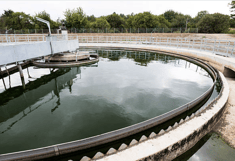

Understanding the dynamics of solid suspension is essential for optimizing the performance of process equipment. Companies are interested in both reducing time to market by accelerating design and the potential scale-up issues to be identified for risk analysis. This involves analyzing of the Impact of geometry on product quality, the impact of operating conditions affecting unit operations, and planning for the retrofit of the new process into existing equipment.
The implications of inadequate solid suspension in process equipment can be significant. Factors influencing solid suspension include particle size and density, fluid properties, vessel geometry, and agitation intensity (including power consumption). By assessing these factors and their interactions, engineers can make informed decisions to enhance the performance of such equipment.
Performing Reliable CFD Modeling
Computational Fluid Dynamics (CFD) modeling is a powerful tool for simulating process equipment, enabling the assessment of how solid suspension develops. By using CFD simulations, engineers can gain insights into,
- Flow patterns
- Solid distribution and trajectories
- Prediction of Shear rate and Shear history
- Residence and blend times
- Reduction of batch failures within the equipment
Reliable results from CFD modeling require an accurate representation of the fluid dynamics and solid-liquid interactions. This involves creating the actual geometry, selecting appropriate turbulence models, particle models, and boundary conditions to capture the real-world behavior of the system. The simulation engineer is also allowed to explore different operating scenarios for the optimization.
However, it is important to validate CFD models using experimental data to ensure their reliability. By comparing simulation results with actual measurements, engineers can verify the accuracy of the models and make necessary adjustments. One approach for this is the Design of Experiments (DOE) and Response Surface. Ansys CFD provides proven turbulence models and workflows for such simulations.
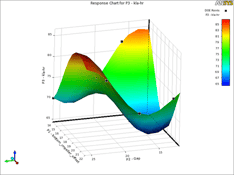
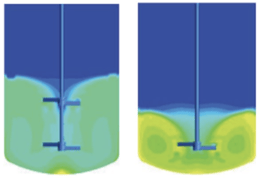
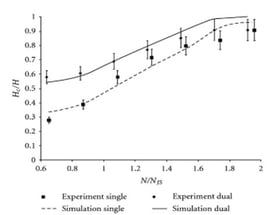
Success Case
Aditya Birla Science & Technology Co. Pvt. Ltd. performed CFD modeling to optimize an impeller for a mixing application. The initial process exhibited poor mixing at the top zone (rich in particles), and insufficient impeller suction. The first numerical model represented the initial geometry and operating conditions, serving as a reference for further comparisons. Five additional scenarios were simulated, ultimately leading to the development of a system that increased mixing efficiency by more than five times and reduced power consumption by 7 kW.
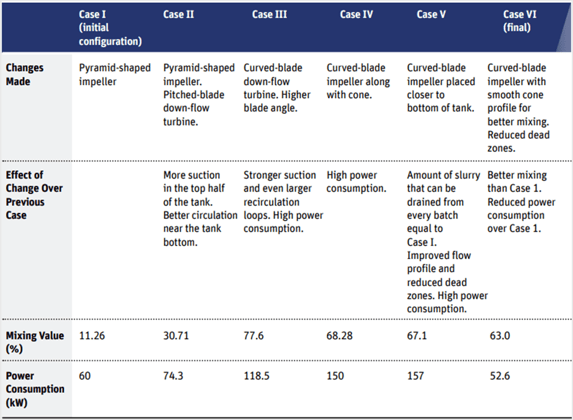
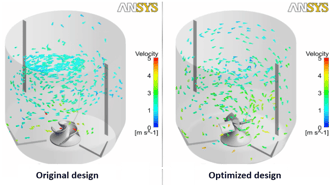

Summary
Solid suspension is a key concern in various industrial processes. When solid particles settle, they can form a solid layer at the bottom of the equipment, reducing the effective volume available for reaction or mixing. This can lead to incomplete reactions, lower product yields, and increased batch times. Additionally, poor solid suspension increases the risk of equipment fouling and erosion.
The challenge lies in achieving the desired solid suspension and making accurate predictions in the presence of solids. CFD simulation offers benefits such as flow visualization, assessment of cloud height, power consumption, shear rate and residence/blend times. Engineers can utilize this tool to gather valuable information to identify the operating limits and optimize the performance of the system.
Jan 24, 2024 10:15:15 AM
